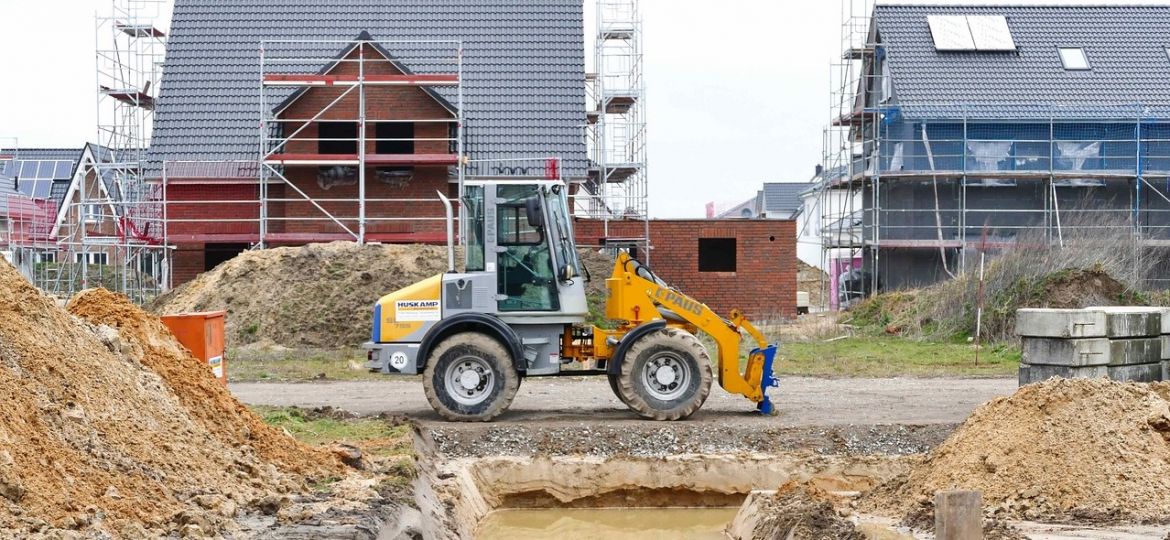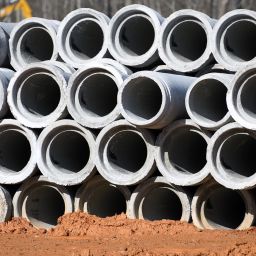
Managing Surface Water Runoff During Construction
Introduction
Construction sites can have a significant impact on the surrounding environment, particularly when it comes to surface water runoff. Poorly managed runoff can lead to flooding, erosion, and pollution of nearby water bodies. To address these concerns, local planning authorities often require the implementation of a temporary surface water drainage management system throughout the construction period. In this blog, we’ll discuss the steps to create an effective drainage system, the importance of doing so, and how you can contribute to sustainable construction practices.
1. Assessing the Site
A comprehensive site assessment lays the foundation for an effective drainage system. This process should involve:
- Identifying existing drainage systems and natural drainage patterns
- Analyzing soil types and their infiltration capabilities
- Determining potential issues related to surface water runoff, such as slope stability and erosion risks
- Evaluating the surrounding environment, including nearby water bodies, vegetation, and wildlife habitats
By understanding the unique characteristics and challenges of the construction site, you can develop a tailored drainage system that addresses potential concerns.
2. Calculating Runoff
Accurate runoff calculations are essential for designing an effective drainage system. To do this, consider:
- Using hydrological methods which take into account factors such as soil type, slope, and construction activities
- Analyzing rainfall data, including the intensity and duration of storms, to estimate the maximum expected runoff
- Identifying potential sources of water on the construction site, including both natural and construction-related sources
By combining this information, you can estimate the rates and volumes of surface water runoff during construction and design a system capable of managing it.
3. Designing the Temporary Drainage System
With the expected runoff rates and volumes determined, you can design a temporary drainage system tailored to the construction site. Consider the following components:
- Silt fences to capture sediment and slow down water flow
- Sediment basins or sediment traps to settle out sediment particles from the runoff
- Drainage ditches or swales to collect and convey water away from the construction site
- Temporary ponds or check dams to store water and allow sediment to settle
These components should be strategically placed and designed to handle the expected runoff volume and rate.
4. Addressing Water Quality
Maintaining water quality is crucial for protecting the environment during construction. Implement the following measures:
- Sediment and erosion control measures, such as silt fences, sediment basins, and gravel filter berms, to reduce sediment transport
- Additional filtration or treatment methods, like biofiltration systems or sediment control ponds, to remove pollutants and enhance water quality
- Best management practices (BMPs) for construction activities, including proper storage of materials and waste management, to minimize the potential for contamination
By incorporating these measures, you can prevent pollution of nearby water bodies and support a sustainable construction process.
5. Maintenance Plan
A well-designed drainage system requires regular maintenance to ensure its continued effectiveness. Develop a maintenance plan that includes:
- Routine inspections of all drainage system components
- Scheduled maintenance and cleaning of sediment basins, silt fences, and other measures
- Contingency plans for dealing with unexpected events, such as heavy rainfall or equipment failure
- Documentation of maintenance activities for reporting and compliance purposes
A proactive maintenance plan helps to prevent system failures and ensures that the temporary drainage system remains effective throughout the construction period.
6. Submitting the Design for Approval
Once your design is complete, submit it to the local planning authority for review and approval. Make sure to include:
- Detailed calculations and data to support your runoff estimates
- Drawings and schematics of the proposed temporary drainage system
- Maintenance plans and schedules
- Supporting documentationto demonstrate compliance with planning conditions and environmental regulations
Submitting a thorough and well-documented design will increase the likelihood of approval and help to expedite the review process.
7. Implementing the Approved Design
After obtaining approval from the local planning authority, it’s time to implement the temporary surface water drainage management system on-site before commencing construction. To ensure success, be sure to:
- Train construction personnel on the proper installation and maintenance of drainage system components
- Establish clear lines of communication between construction teams and environmental compliance personnel
- Monitor the system’s performance throughout the construction period, making adjustments as needed based on site conditions and weather events
- Maintain detailed records of system implementation and performance for compliance reporting purposes
By closely following the approved design and proactively addressing any issues that arise, you can ensure the effectiveness of the temporary drainage system.
It should be noted that it is possible to use the Permanent Drainage as part/all of your temporary drainage system.
Why Temporary Drainage Systems Matter
A well-designed and maintained temporary drainage system plays a critical role in sustainable construction practices. The benefits of an effective system include:
- Reducing the risk of flooding and erosion, protecting both the construction site and surrounding areas
- Preserving the health of nearby water bodies, ecosystems, and wildlife habitats by maintaining water quality and preventing pollution
- Demonstrating a commitment to responsible construction practices, which can lead to improved community relations and a positive reputation
- Ensuring compliance with local planning conditions and environmental regulations, reducing the risk of fines, penalties, or project delays
In conclusion, temporary surface water drainage management systems are crucial for mitigating the environmental impact of construction sites. By following the steps outlined above and working closely with local planning authorities, you can create a drainage system that meets the needs of your construction site while protecting the environment and contributing to sustainable construction practices.


